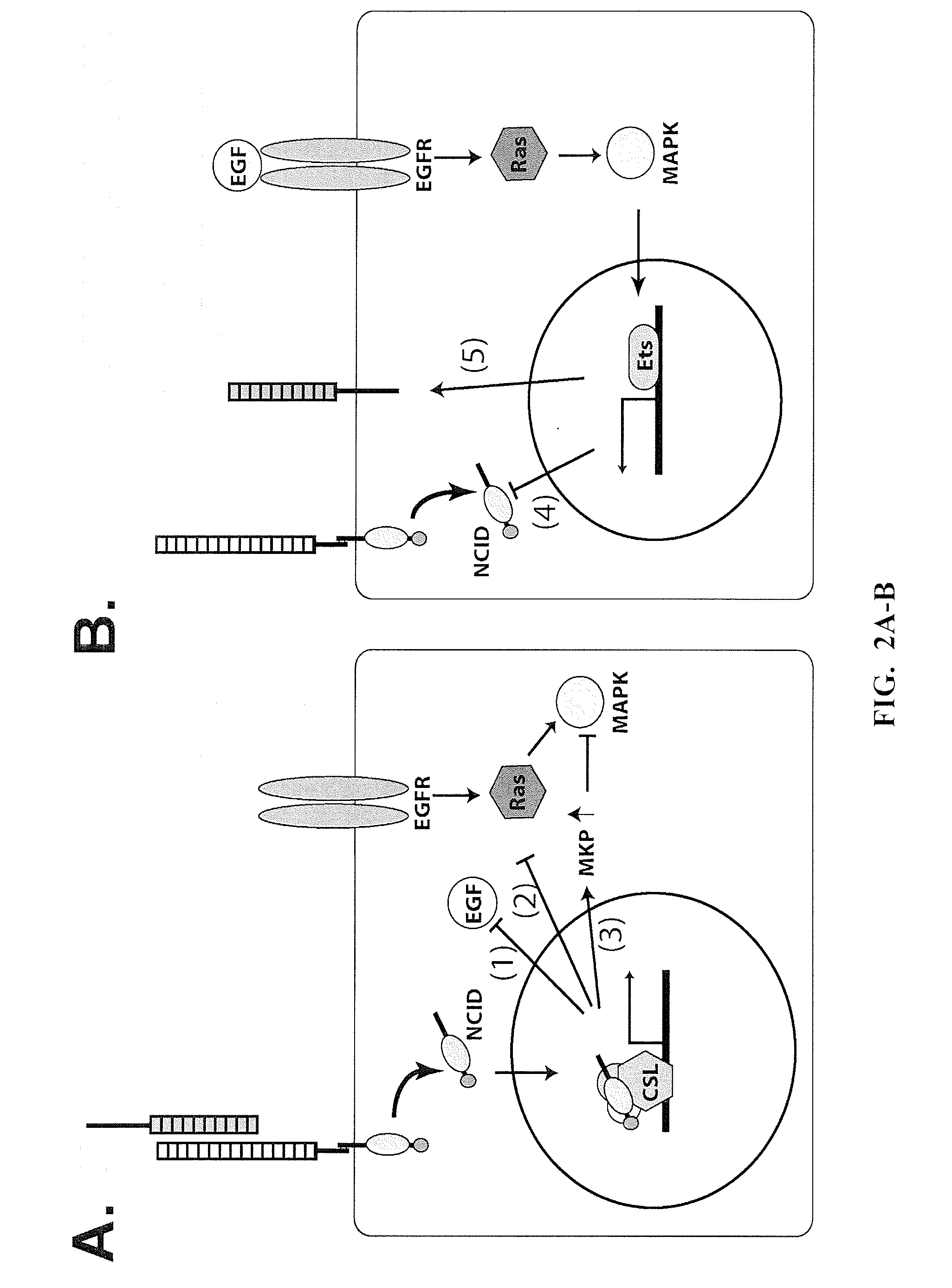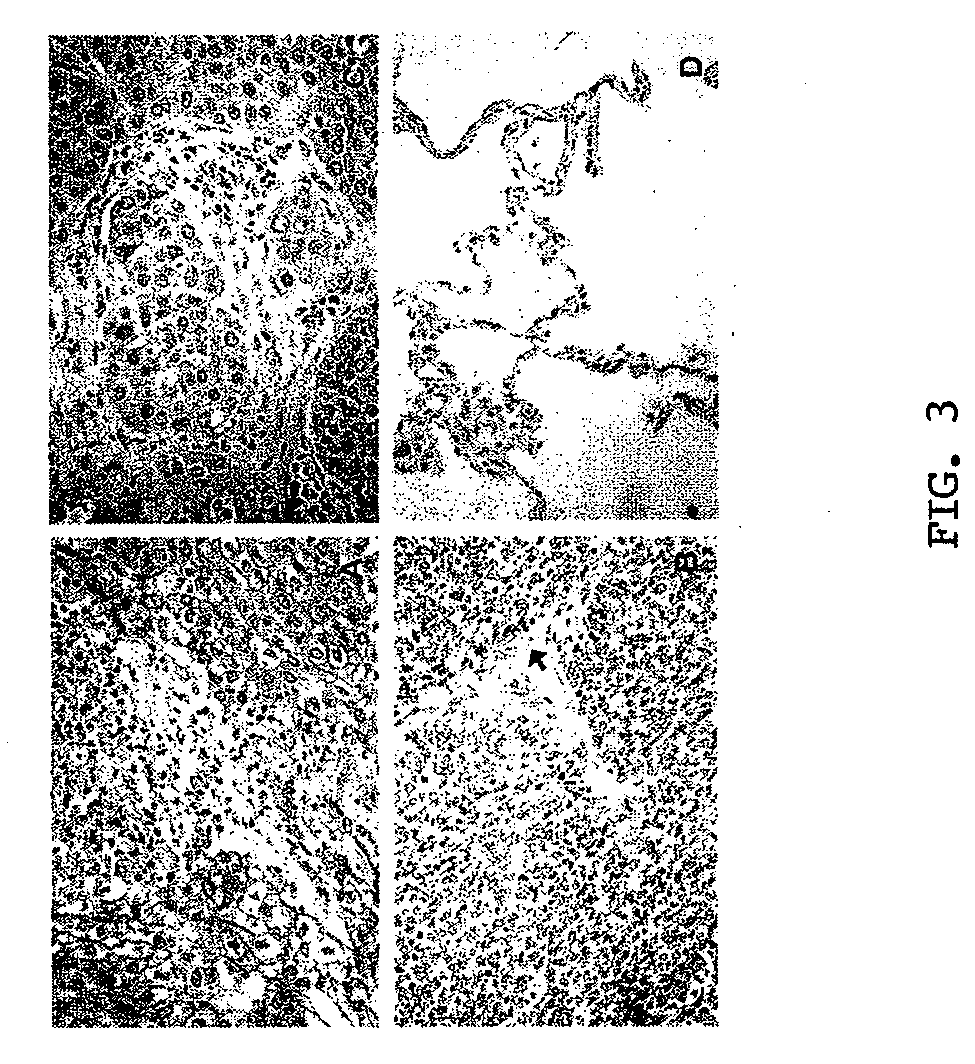Targeting of notch3 receptor function for cancer therapy
- Summary
- Abstract
- Description
- Claims
- Application Information
AI Technical Summary
Benefits of technology
Problems solved by technology
Method used
Image
Examples
example 1
[0257]Notch3 Is Expressed in Resected Human Lung Cancers. The clinical relevance of a pathway to tumorigenesis often depends on the prevalence of its dysregulation. To begin to assess the prevalence of Notch3 involvement in lung cancer, the inventors investigated the frequency of Notch3 overexpression in resected lung cancer. They used immunohistochemistry (IHC), with a characterized and validated Notch3 antibody recognizing the extracellular domain (Joutel et al., 2000), in resected lung tumor tissues. For this experiment, the inventors used tumor tissue arrays produced as part of the Vanderbilt SPORE initiative. When the Notch3 antibody targeting the extracellular domain was used, a pattern of cytoplasmic and membranous staining was observed in the representative adenocarcinoma and squamous cell carcincoma (FIG. 3, panel A and C). No staining was observed in a neuroendocrine tumor and normal lung tissue (panel B and D), suggesting that Notch3 dysregulation is specific to cancer. T...
PUM
| Property | Measurement | Unit |
|---|---|---|
| Electrical resistance | aaaaa | aaaaa |
| Cell growth | aaaaa | aaaaa |
Abstract
Description
Claims
Application Information
 Login to View More
Login to View More - R&D
- Intellectual Property
- Life Sciences
- Materials
- Tech Scout
- Unparalleled Data Quality
- Higher Quality Content
- 60% Fewer Hallucinations
Browse by: Latest US Patents, China's latest patents, Technical Efficacy Thesaurus, Application Domain, Technology Topic, Popular Technical Reports.
© 2025 PatSnap. All rights reserved.Legal|Privacy policy|Modern Slavery Act Transparency Statement|Sitemap|About US| Contact US: help@patsnap.com



